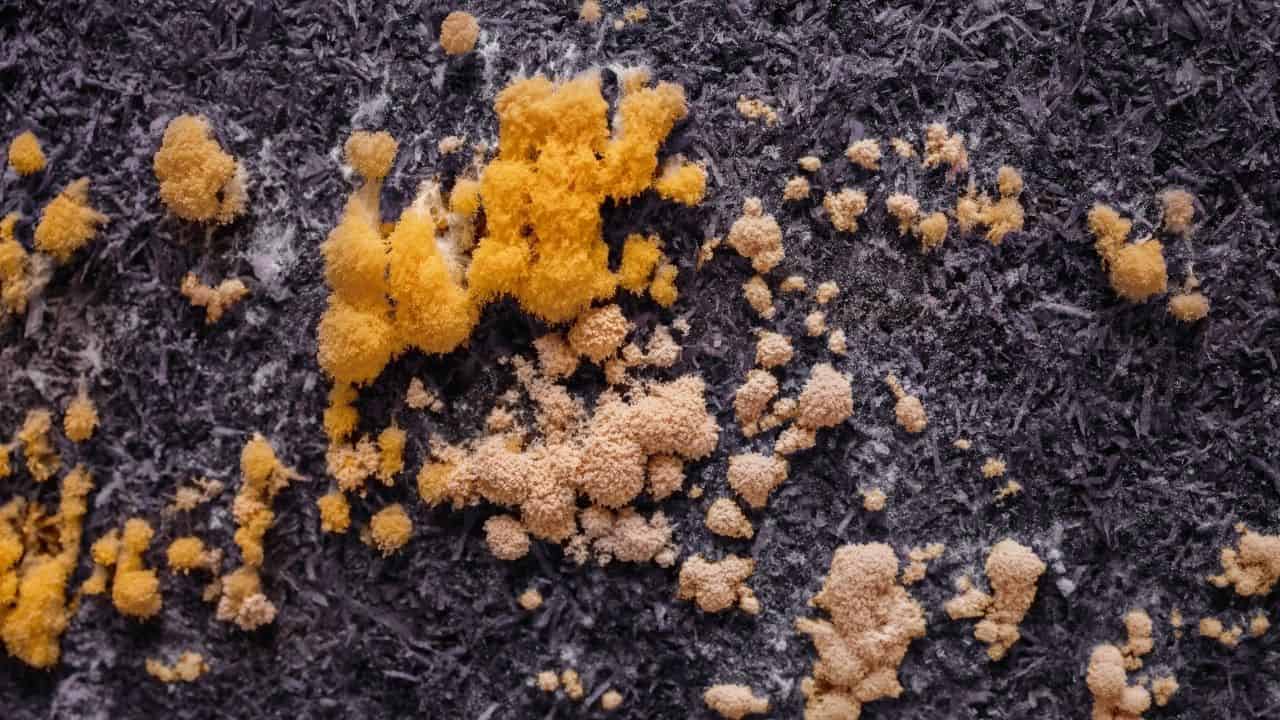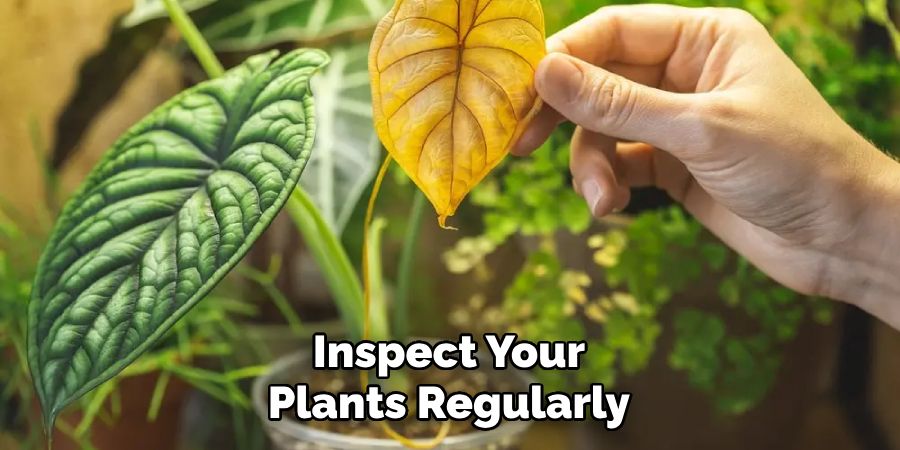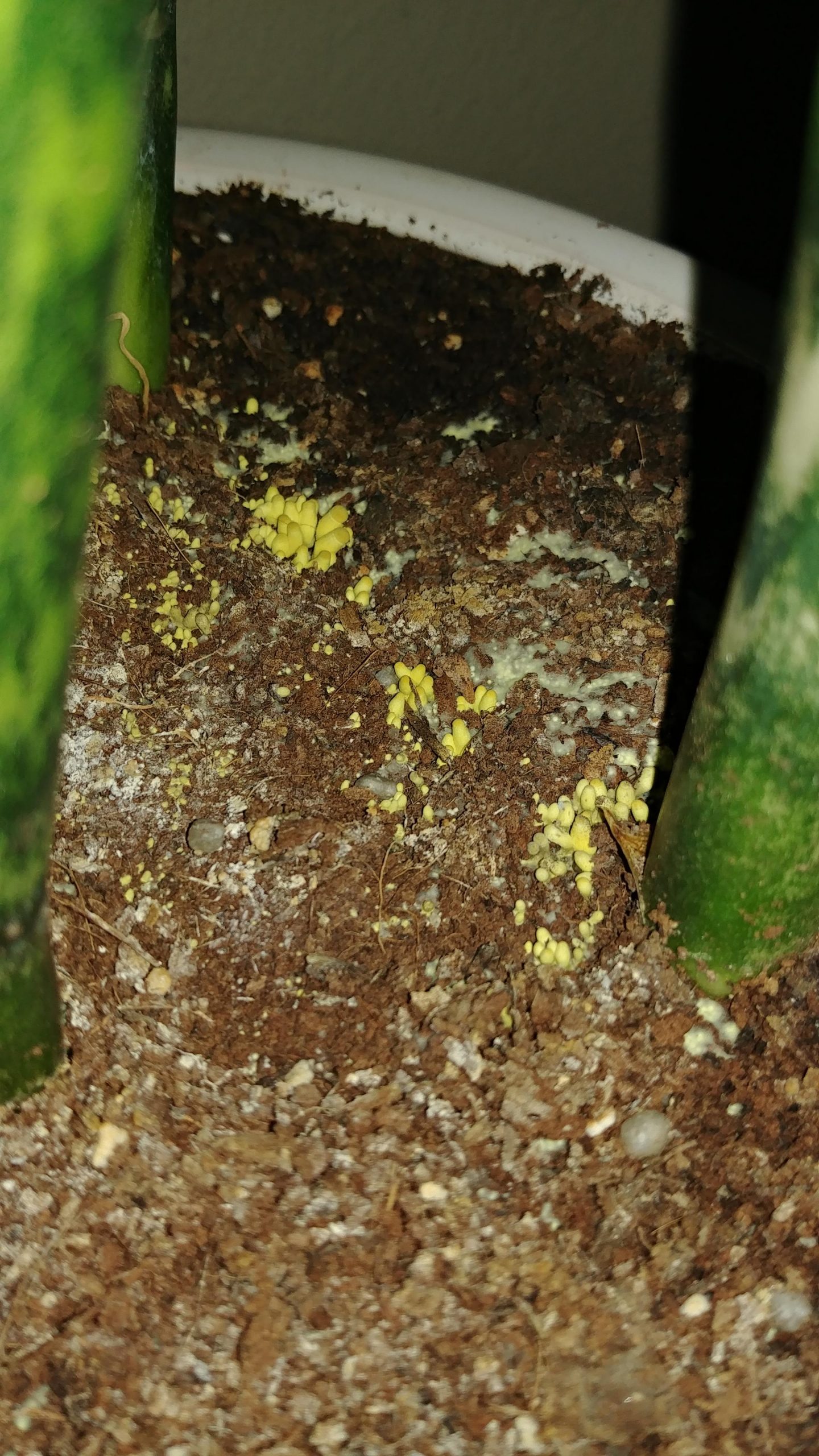To get rid of yellow fungus in houseplant soil, you can follow these steps: 1. Remove the affected soil and discard it properly.
2. Treat the remaining soil with a fungicide spray or solution according to the instructions on the product label. Yellow fungus in houseplant soil can be a common issue that gardeners and plant enthusiasts may encounter. This fungal growth not only affects the appearance of the plant but also poses a threat to its overall health.
Fortunately, there are simple and effective ways to eliminate yellow fungus from soil, ensuring a healthy and vibrant indoor garden. By removing the affected soil and treating the remaining soil with a suitable fungicide, you can combat yellow fungus and restore the vitality of your houseplant. We will explore various methods and techniques to get rid of yellow fungus in houseplant soil, providing you with helpful insights and tips to achieve successful fungus control.

Credit: plantophiles.com
How to Get Rid of Yellow Fungus in Houseplant Soil: Step by Step Guide
Causes Of Yellow Fungus In Houseplant Soil
Yellow fungus in houseplant soil is caused by moisture imbalance, overwatering, and lack of sunlight. Too much water can create a damp environment that fosters fungal growth. Lack of sunlight inhibits photosynthesis, weakening the plant and making it susceptible to fungal infections.
To get rid of yellow fungus, adjust the watering schedule, ensuring the soil is not constantly soaked. Allow the soil to dry out slightly between watering sessions. Additionally, provide sufficient sunlight by placing the houseplant in a well-lit area. This will promote healthy plant growth and discourage the growth of yellow fungus.
Remember to maintain proper moisture levels and sunlight exposure to prevent yellow fungus from recurring in the houseplant soil. Take steps to create an optimal environment for your plants to thrive and remain fungus-free.
Symptoms Of Yellow Fungus In Houseplant Soil
Yellow fungus in houseplant soil can cause various symptoms. One of these is the presence of yellow spots on the leaves. These spots are a clear indication of fungal infection. Another symptom is a foul odor emanating from the soil.
If you notice a strong, unpleasant smell coming from your houseplant, it could be due to yellow fungus. Additionally, stunted growth is another sign of yellow fungus in the soil. If your plants are not growing as they should be, despite proper care, it may be due to this fungal infection.
It is important to identify and treat yellow fungus promptly to prevent further damage to your houseplants.
Prevention Tips For Yellow Fungus In Houseplant Soil
Prevention tips for yellow fungus in houseplant soil include proper watering techniques, providing adequate sunlight, and using well-draining soil. Water your houseplants carefully, ensuring they receive enough moisture without becoming waterlogged. Place your plants in areas where they can receive sufficient sunlight, as yellow fungus thrives in dark and damp conditions.
Additionally, using well-draining soil helps prevent excessive moisture retention and creates an unfavorable environment for the fungus to grow. By following these guidelines, you can safeguard your houseplants from yellow fungus and maintain a healthy environment for their growth without the need for any harmful chemicals or pesticides.
So, remember to water wisely, give them sunlight, and choose the right soil for your houseplants to keep yellow fungus at bay.
**Effective Natural Methods To Get Rid Of Yellow Fungus In Houseplant Soil**
Pruning and removal are effective methods for getting rid of yellow fungus in houseplant soil. Trim affected leaves and stems to prevent further spread. In case of heavily infected plants, it is best to remove them completely. Soil treatment is also crucial in eliminating the fungus.
Remove the upper layer of infected soil and sterilize it with a baking soda solution. Next, replace it with fresh and well-draining soil. Boosting the plant’s micronutrients is another helpful step. Applying a natural fertilizer rich in micronutrients can enhance the plant’s defense against fungus.
Additionally, organic antifungal mixtures can be used. Utilize neem oil spray, cinnamon powder, or a hydrogen peroxide solution to combat the yellow fungus in houseplant soil.
**Preventing Future Infestations Of Yellow Fungus**
Inspect your plants regularly for any signs of yellow fungus to prevent future infestations. Maintain appropriate levels of soil moisture to discourage the growth of fungus. Ensure adequate air circulation around your plants to create an unfavorable environment for the fungus.

Quarantine newly acquired plants before introducing them to your existing collection to avoid spreading the infection. By adhering to these guidelines, you can effectively eliminate yellow fungus from your houseplant soil.
Frequently Asked Questions On How To Get Rid Of Yellow Fungus In Houseplant Soil
How Do I Get Rid Of Yellow Fungus In Houseplant Soil Quickly?
To quickly get rid of yellow fungus in houseplant soil, remove the affected soil and replace it with fresh, sterilized soil. Ensure proper drainage in the pot and avoid overwatering. Treat the plant with a fungicide to prevent further fungal growth.
Can Yellow Fungus In Houseplant Soil Harm Humans?
Yellow fungus in houseplant soil is not generally harmful to humans. However, some people may experience allergic reactions or respiratory issues if they come into contact with the fungus. It is important to practice good hygiene and wear gloves when handling plants with yellow fungus.
What Causes Yellow Fungus In Houseplant Soil?
Yellow fungus in houseplant soil is typically caused by overwatering or poorly drained soil. The excess moisture creates a favorable environment for fungal growth. Lack of sunlight, overcrowding, and poor air circulation can also contribute to the development of yellow fungus.
Regularly inspecting and maintaining your plants can help prevent its occurrence.
Conclusion
To effectively get rid of yellow fungus in houseplant soil, it is essential to take proactive measures and maintain a healthy environment for your plants. Regularly inspecting the soil and plants for signs of yellow fungus can help you catch any issues early on.
Proper watering techniques, such as allowing the soil to dry out between waterings, can help prevent the growth of fungus. Additionally, maintaining good air circulation around your plants and avoiding overcrowding can discourage the development of yellow fungus. Using sterilized soil and pots when repotting your plants can also help prevent the spread of fungus.
Remember to regularly clean and disinfect your gardening tools to further minimize the risk of contamination. By following these tips and being diligent in your plant care routine, you can effectively eliminate yellow fungus and keep your houseplants healthy and thriving.

